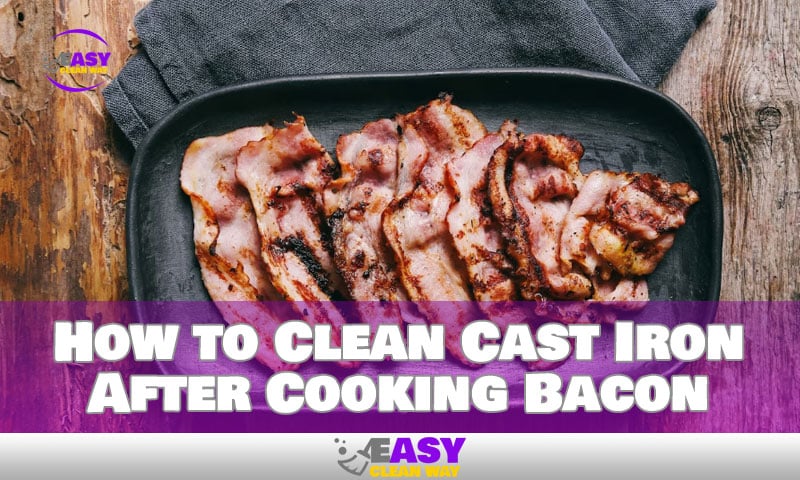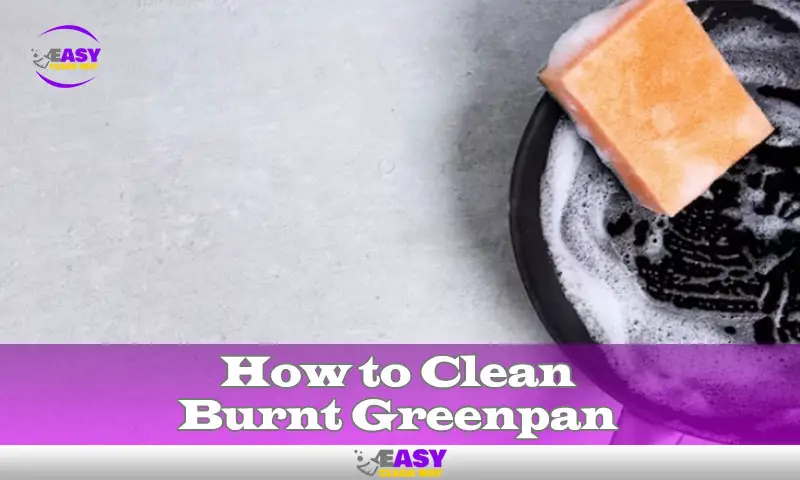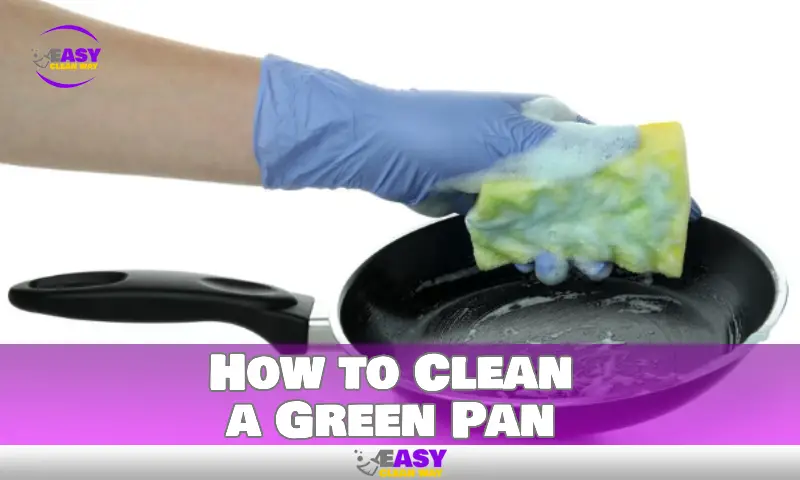If you love the flavor that bacon adds to your favorite meals, then you’ll want to learn how to clean cast iron after cooking with bacon grease. Bacon is a delicious and versatile ingredient, but it can be tricky to clean away the residue it leaves behind on your cookware.
Thankfully, cleaning cast iron after bacon cooking isn’t as difficult as it would sound. Notwithstanding any bacon-related messes that may occur, I’ll provide my best advice for keeping your cast iron cookware looking and performing like new in this tutorial. So take a dish towel, and let’s begin.
What Happens to Cast Iron When You Cook Bacon?
Are you a bacon lover looking to cook it in a cast iron skillet? It’s definitely one of the best ways to get that perfect crispy texture and flavor, but it can also leave your cast iron skillet a bit worse for wear if you don’t clean it properly afterwards.
How does cooking bacon affect your pan? The melting fat from the meat forms a link with the pan’s metal surface as it heats up and melts. Tightly packing the bacon strips together or using too much fat when frying them results in more fat being created and makes it easier for links to develop between the fat and the skillet’s metal surface.
To help prevent sticking and staining, adding a ½ tablespoon of oil (e.g. bacon grease, butter, or lard) to your skillet before introducing your bacon strips can help things run more smoothly. For around 10 minutes, the strips should be slowly heated and cooked until thoroughly done. If done correctly, you won’t need to use a lot of oil or crowd your skillet and yet have properly cooked bacon.
Initial Cleaning and Removing Grease
You’ve just completed using your cast iron to fry the most amazing bacon. You now have the difficult task of cleaning up all that oily filth. But relax—the cleaning procedure is really fairly easy.
First, use a wooden spoon or spatula to scrape off any excess bacon grease and bits that are still on the cooking surface. This removes the bulk of the mess, making it easier for you to proceed with the deeper cleaning. For those stubborn bits that are stuck to your pan, take a scrub brush and give it a few good scrubs – make sure not to use too much pressure since you don’t want to damage your pan’s seasoning.
The next step is to take a paper towel soaked in warm soapy water (dish soap works best) and thoroughly wipe down the entire cooking surface – this will remove any remaining grease and any extra bits of bacon. Be sure to include all the crevices and nooks as well! After you’re done, rinse out any last traces of soap with warm water and dry your cast iron pan with a different paper towel before putting it away until you need it again.
Neutralizing Odors With Vinegar
You know that smell that lingers in the air after you’ve cooked bacon? It can be hard to clean, and even harder to get rid of. But don’t worry—you can get your cast iron looking shiny again and neutralize those odors.
Vinegar is one of the best cleaners for removing food residue from cast iron and it can also be used to deodorize carpets, rugs and upholstery too! To make it an even more powerful cleaning tool, try boiling vinegar in a microwave-safe container to remove any bad smells from the microwave.
Baking soda and vinegar can also be used to eliminate odors. Simply combine the two ingredients to make a paste, apply it to the regions where the bacon has been cooked, and let it sit for 30 minutes before cleaning it away with a moist cloth.
Use these natural cleaning techniques to restore the new appearance of your cast iron.
Getting the Last of the Grease Out
You have a few alternatives for cleaning out any leftover fat now that the majority of the bacon grease has been taken out of your cast iron.
If you don’t feel comfortable using strong chemicals to clean your cast iron, then warm water, dish soap and baking soda should do the trick! Mix a tablespoon of baking soda into hot water with some dish soap and soak the pan for a few minutes before wiping it down with a sponge.
If there are still stubborn bits of food stuck to the pan, try using sea salt—it acts as an abrasive that’ll help get off any leftover-on pieces. Just sprinkle some coarse sea salt in the pan and scrub with a non-metal brush.
Another option is to create a paste by combining the bacon fat you previously removed with some table salt. Spread this paste across the pan and scrub off everything that is still present. Even while it could require some work, it will be worthwhile when your cast iron looks fresh new.
Seasoning and Maintaining Your Cast Iron
Making sure that your cast iron is properly seasoned and maintained is key for a good end result when you’re cooking with bacon.
Cooking with oil helps create a powerful seasoning, so be sure to season your pan and remember to re-oil it after each use before putting it back on the burner over medium-low heat. To avoid smoking if you don’t get the oil hot enough, use a neutral oil like canola or vegetable oil.
To clean up after cooking, let your cast iron cool off then rinse with hot water and scrub with a nylon bristle brush. Be sure not to use soap, because it has a tendency to strip away the seasoning layer of your pan and reduce its durability. After you’ve scrubbed off all residue, dry the pan off then apply a thin layer of oil before storing away.
People Also Like: Clean a Leopard Gecko Tank to Keep it’s Looking Best
Conclusion
No one wants a stained cast iron skillet, so take the extra steps to prevent it. For bacon and other oily meats, clean the skillet after each use with hot water and a bit of soap to get rid of the excess fat, then use a stiff brush to remove any bits of food and carbon that might have stuck to it. Finish by properly drying the cooking surface with paper towels or a lint-free cloth before applying a light coating of oil. With these suggestions, you may be sure to have a lovely cast iron skillet that won’t tarnish for many pleasurable cooking sessions to come.
Hey there! I’m Alton Smith, your Clean Expert blogger. I’m on a quest to help you conquer chaos and embrace the joys of a tidy life.





